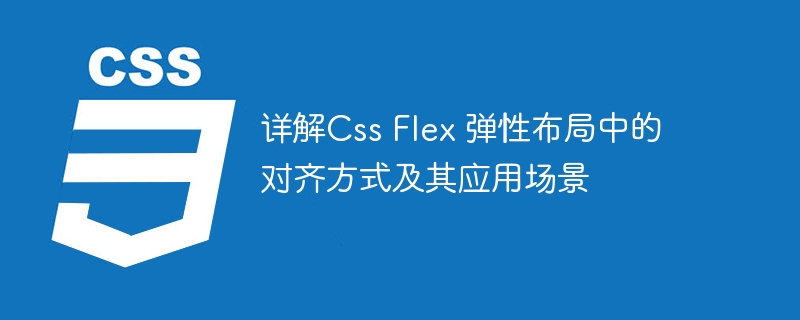

Detailed explanation of alignment in CSS Flex flexible layout and its application scenarios
In web development, CSS Flex flexible layout has become a very common and practical layout Way. It provides a flexible set of layout models that can easily implement page layouts on a variety of different screen sizes and devices. In addition to flexibility, CSS Flex also provides versatility in alignment, which allows us to better control and adjust the layout.
1. The basic concept of alignment
In CSS Flex flexible layout, there are three main alignment methods: main axis alignment, cross axis alignment and axial alignment.
2. Commonly used alignment methods and their application scenarios
Sample code:
.container { display: flex; justify-content: flex-start; /* 将弹性项左对齐 */ } .container { display: flex; justify-content: flex-end; /* 将弹性项右对齐 */ } .container { display: flex; justify-content: center; /* 将弹性项居中对齐 */ }
Sample code:
.container { display: flex; align-items: flex-start; /* 将弹性项顶部对齐 */ } .container { display: flex; align-items: flex-end; /* 将弹性项底部对齐 */ } .container { display: flex; align-items: center; /* 将弹性项垂直居中对齐 */ }
Sample code:
.item { align-self: flex-start; /* 将该弹性项顶部对齐 */ } .item { align-self: flex-end; /* 将该弹性项底部对齐 */ } .item { align-self: center; /* 将该弹性项垂直居中对齐 */ }
3. Summary
CSS Flex elastic layout provides a wealth of alignment methods and can be flexibly applied according to actual needs. By setting properties such as main axis alignment, cross axis alignment, and axial alignment, we can easily achieve various page layout effects. The flexible application of these alignment methods can help us better control and adjust page layout and improve user experience.
The above is the detailed content of Detailed explanation of alignment in CSS Flex layout and its application scenarios. For more information, please follow other related articles on the PHP Chinese website!




